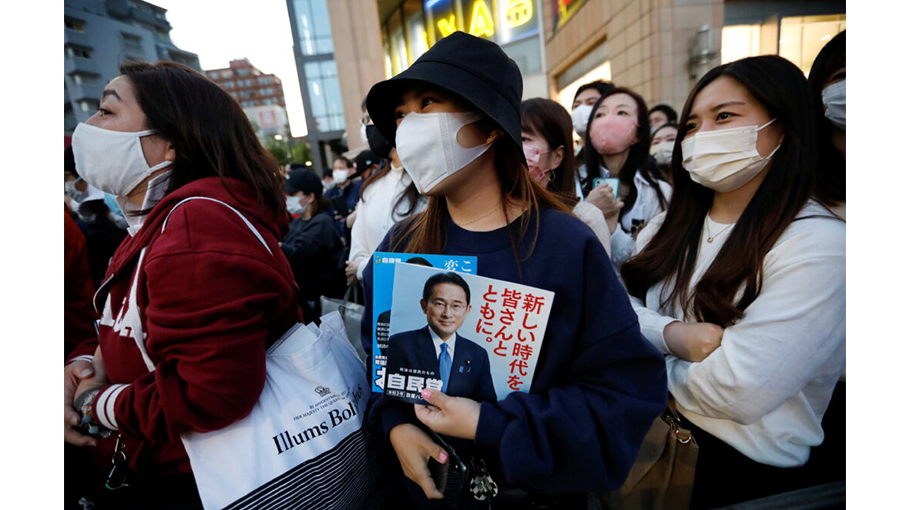Are young voters poised to upend Japanese politics?

Japanese Prime Minister Fumio Kishida’s position is becoming more precarious, primarily due to a prominent political funding scandal within the ruling Liberal Democratic Party (LDP). A crucial factor in the conservative LDP’s ongoing rule will be whether there are any reversals in the LDP’s recent trend of garnering support from young people.
Kishida’s current term as the president of the LDP concludes in late September. And though the next House of Representatives election is not technically required until October 2025, a new prime minister will likely dissolve the lower house before a foreseeable drop in public support.
In 2015, Japan witnessed a pivotal shift as the voting age was lowered from 20 years and older to 18 years and older. This was anticipated to invigorate the political consciousness of young people.
Yet, voter turnout among those in their 20s has been in continual decline. In the 2021 House of Representatives election, turnout among this age group plummeted to 37 per cent — including 51 per cent among 18-year-olds who had recently received a lesson on elections at school and 35 per cent among 19-year-olds. This stands in stark contrast to the 62 per cent turnout among those aged 70 and above.
Merely lowering the voting age is not sufficient. It is imperative to foster active support among young voters and instil a sense of voluntary political participation.
Japan’s decision to lower the voting age was not inevitable, but a response to certain incentives — primarily tied to constitutional revision. The LDP’s conservative stance, coupled with scholarly observations of a conservative shift among young demographics, prompted the inclusion of a voting age reduction in a proposed national referendum law. Former prime minister Shinzo Abe recognised the potential influence a conservative youth vote could have on constitutional revision.
The motives behind lowering the voting age were not solely focused on enhancing youth political awareness. Rather, this was a tactical manoeuvre to advance the LDP’s longstanding ambition of amending Japan’s pacifist constitution, particularly Article 9.
Since implementing new voting-age regulations in 2015, Japan has witnessed five national elections. While youth apathy towards politics remains prevalent, younger generations tend to favour the LDP.
According to an exit poll conducted by NHK for the 2021 House of Representatives election, 43 per cent of 18- and 19-year-olds, and 41 per cent of people in their 20s, voted for the LDP in the proportional representation vote. For voters in their 30s, 39 per cent voted LDP, for those in their 40s and 50s, it was 36 per cent, and for voters in their 60s, it was 34 per cent. Young people who prioritise stability over political change support the LDP.
In a democracy, public opinion entails popular pressure on government decisions.
In the United States, for example, the 1971 constitutional amendment to reduce the voting age from 21 to 18 reflected public opinion. When the Vietnam War provoked the compelling slogan, ‘Old enough to fight, old enough to vote’, and the public rallied behind it, the government changed the voting age to 18. Yet there was no such impetus for Japan to reduce the voting age.
The legislative process of lowering the voting age also holds significant sway over the efficacy of such policies. While studies have focused on the aftermath of such reforms, the crucial role of process-oriented understanding has been overlooked.
It is noteworthy that there was initial scepticism among eligible voters towards lowering the voting age. A 2008 survey conducted by the Asahi Shimbun revealed opposition outweighed support — 51 per cent versus 38 per cent — for lowering the voting age to 18. By 2015 opinions had shifted, with a poll indicating support (48 per cent) surpassing opposition (39 per cent).
Japan changing the voting age hardly involved popular pressure. But by lowering the voting age, there was an increase of approximately 2.4 million young voters nationwide, though Japanese society is predominantly composed of older adults. This results in roughly 8300 new votes per each of the 289 single-member constituencies — potentially influencing outcomes in single-member constituencies. This is particularly important considering that as Japan’s population ages, the voices of younger generations tend to be overshadowed by elderly people.
There has not been any significant change in the mindset of Japan’s youth. What has changed is the ideological shift in the Kishida administration, which now seems more inclined towards maintaining the status quo.
This aligns with the fact that the centre-left opposition Constitutional Democratic Party, which has been proposing various ‘reform plans’ to achieve its policies, is gaining support from politically engaged young people. Since the Kishida administration’s inception in October 2021, support for his cabinet among younger groups has declined. Support among those aged in their 30s and below dropped from 62 per cent in 2021 to a perilous 23 per cent by April 2024.
Kishida has courted young voters with the promise of ‘unprecedented measures to tackle the declining birthrate’. His government appears inclined towards offering ‘public assistance’ to young people. Yet the funding mechanisms for these initiatives remain undisclosed. Despite these efforts, Kishida’s dwindling popularity likely cannot be reversed. Japanese young voters might be on the brink of reshaping politics.
Yasuo Takao is Adjunct Senior Research Fellow at the School of Media, Creative Arts and Social Inquiry at Curtin University.
Source: East Asia Forum




